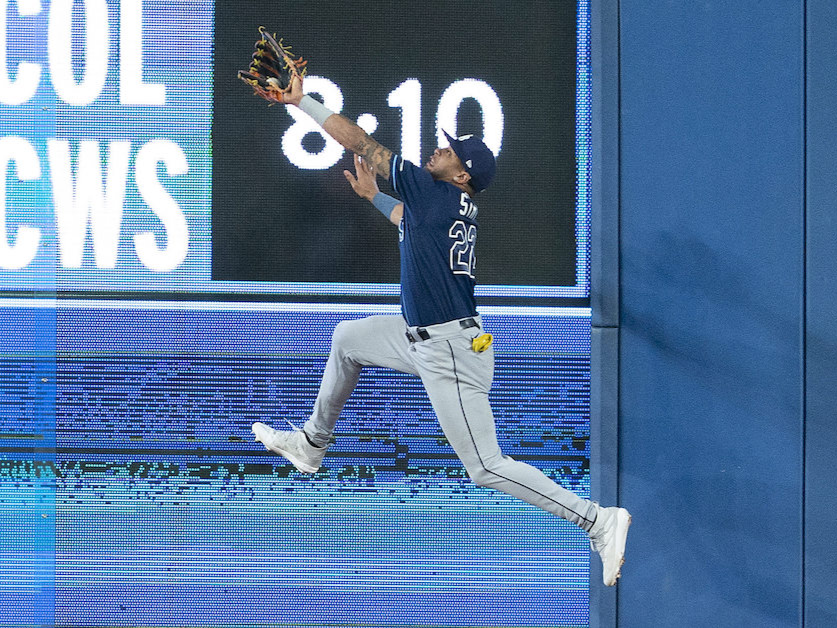
Elite pitchers and baseball players are not only strong but also explosive. This requires not only strength but the ability to apply that strength quickly and can be a bit more involved than simply training strength only. This is where plyometrics come in. Plyometric exercises typically involve rapid, powerful jumping and/or hopping movements preceded by a preloaded countermovement. This targets the fast-twitch muscle fibers, the primary muscles that are responsible for generating force rapidly, as in throwing or hitting a baseball or the initial take-off when attempting to steal a base.
Let’s get into it…
Types of Plyometrics
Plyometrics essentially train rapid muscle contraction and extension, commonly referred to as the SSC or “Stretch-Shortening Cycle”. They are used to improve both reaction speed and muscular power / explosiveness and are broken down into two distinctive types:
-
- Extensive – (Fast SSC – Force Plate Ground Contact Times <.250 ms)
- Intensive – (Slow SSC – Force Plate Ground Contact Times of >.250 ms)
They each offer distinct advantages based on the goals and demands of the sport you are playing / training. Incorporating a mix of both types will yield well-rounded results, allowing athletes to compete at their highest potential.
The focus of this article will be on plyometric training for baseball. So, let’s take a look at each.
Extensive – These are submaximal plyometric exercises performed at low intensity for higher rep ranges (longer durations). The focus is on building endurance, technique, and movement quality. They utilize fast contact times (<.250 ms), and are more closely related to reactive strength rather than maximal strength abilities, making them preferable for more “endurance”, as they promote the ability to maintain power over longer durations.
Sample exercises include Skipping, Pogo Jumps, Double Bounding, Continuous Jumps.
Pogo Jump
Intensive – These plyometrics involve high-intensity, low-volume exercises aimed at maximizing the Rate of Force Development (RFD). They utilize slower contact times (> .250 ms) and are more closely related to maximal strength abilities. This means that the focus is on generating larger ground force in minimal time—this is pure gold for a sport such as baseball, which is built on short, explosive bursts of movement. That is why the majority (but not all) of our plyo training involves intensive plyometrics.
Sample exercises include Depth Drops, Drop Jumps and Single Leg Hurdle Hops.
Lateral Hurdle Hop-to-Heiden
Testing
The S. Leg Drop Test Is a more involved test with a higher intensity than the standard bilateral (2-leg) drop jump test. We test S. Leg since that is where baseball players “live” 95% of the time during athletic movements, especially when transferring front leg force through decelerating on the mound or blocking when hitting.
The result is what we call a “Reactive Strength Index” or “RSI”. We use the RSI to decide which level the athlete should start training in, allowing for true optimization of their training program.
Leg Drop Test
Training Different Phases
After testing, we break our athlete’s plyometric ability into four phases based on the RSI data we receive from the force plate data. I’ve listed them below with an example of a drill we may use in that particular phase.
-
- Phase 1 – Initially, the goal should be to introduce athletes to Slow SSC exercises to correct techniques in jumping, landing, and hopping as well as further develop some much-needed eccentric strength.
Heiden & Stick
-
- Phase 2 – Start to introduce more moderate intensity fast SSC exercises such as repeated line hops or hops over very low hurdles. The focus remains on short, sharp ground contact times throughout the hopping action (We do not want to use a hurdle height which encourages a focus on jump height to the detriment of contact times).
Leg Medial-Lateral Line Hop
-
- Phase 3 – The focus is now on high-output, maximal-effort reactive strength training. Start using methods that assist with the transfer of the physical qualities we have developed to the sport of baseball.
Reactive Heidens
-
- Phase 4 – In this final phase, time may be better spent on more specific speed training instead of plyometrics, however, some fast SSC exercises can stay in programming throughout the year as well as multi-directional drills.
Depth Drop to Multi-Directional Hurdle Hop
Periodization
In a perfect world, with an athlete coming in on day 1 with a baseline plyo level of Phase 3, we would follow the below off-season protocol. However, more often than not, athletes with younger training ages often enter at Phase 1 or 2. In this case we would prescribe the appropriate drill that fits their level and progress through re-testing every 6-8 weeks throughout the off-season. Sorry guys, there is no “one size fits all”.
Early Off-Season: Focus on extensive plyometrics-lateral line hops, pogo jumps continuous jumps 2-3 times per week.
Mid Off-Season: Gradually incorporate intensive plyometrics-depth jumps, single-leg hops. (Prior extensive plyos can be kept as a warm up at this point).
Late Off-Season: Add in intensive exercises with maximal effort to sharpen explosiveness and reaction time.
*** Note: We place our plyo drills at the beginning of our programs to ensure that the athlete is rested in order to to maximize power output while reducing the risk of injury.
Summary
The main goal of plyometrics for baseball players is to help turn early off-season gains into more explosive movements by decreasing the time going from the eccentric to concentric phase, in other words improving their “reactive strength”. Through the rapid contraction and extension of muscles (a process called the stretch-shortening cycle), plyometrics enhance both speed and power, making it a staple in athletic conditioning.
See ya’ in the gym…
By Nunzio Signore (BA, CSCS, CPT, NASM, FMS)
If you’re interested in receiving our blogs, please enter your email address below!
You live too far to train with us in-house at RPP? You can now train with us on a REMOTE basis.


